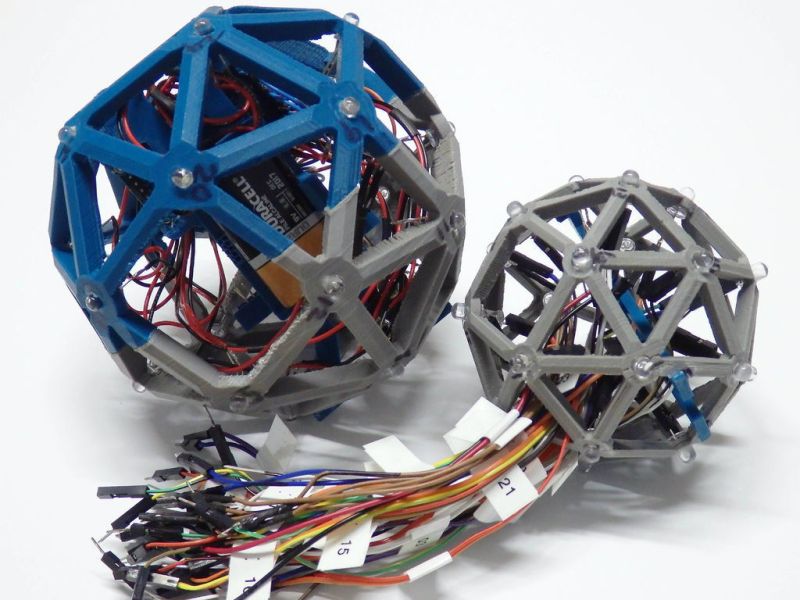Tired of balls that are just balls, and not glowing geometric constructions of electronics and wonderment? Get yourself an IcosaLEDron, the latest in Platonic solids loaded up with RGB LEDs.
The folks at Afrit Labs wanted a fun, glowy device that would show off the capabilities of IMUs and MEMS accelerometers. They came up with a ball with a circuit board inside and twenty WS2812B RGB LEDs studded around its circumference
The frame of the ball is simply a set of twenty tessellated triangles that can be folded up during assembly. The outer shell of the ball is again printed in one piece, but fabricated out of transparent NinjaFlex, an extraordinarily odd, squishy, and likely indestructible material.
Inside the IcosaLEDron is a PCB loaded up with an ATMega328p, an accelerometer, a LiPo battery charger, and quite a bit of wiring. Once the ball is assembled and locked down, the squishy outer exterior is installed and turned into a throwable plaything.
If 20 sides and 20 LEDs aren’t enough, how about a an astonishing 386-LED ball that’s animated and knows its orientation? That’s a project from Null Space Labs, and looking at it in person is hypnotic.
via Makezine
















The ball in that picture is neither a platonic solid nor 20-sided – it has 6 square faces and 32 triangular ones
For some reason, the HaD writer decided to show only a picture of their early prototype, which definitely is not an isocahedron. Their later finished build, which is actually shown in the article, is in fact a proper isocahedron. Honestly, it looks cooler, so I don’t know why HaD decided this picture was better…
Easy, more wires = more hacking “wow” factor!
Tri color LED’s? Those are full addressable RGB led’s. In the electronic parts world a “tri color” led is one that has a red and a green in the led to make red, green, yellow/orange.
As others mentioned, the final product is significantly more refined and a lot less wires.
Icosaledron creator here – yes the shape in the above picture is actually called a “snub cube.” We were 3D printing that structure and then inserting the LEDs. Needless to say it is a difficult wiring job. So we moved to printing a flat icosahedron net. From there we attach the LEDS, wire them up, and fold up the structure.
Regardless – we’re happy to see our work on Hackaday.com